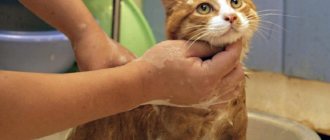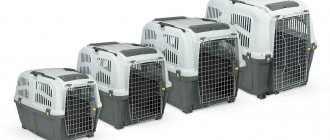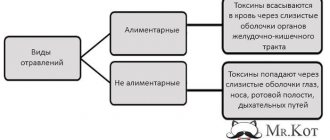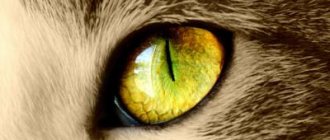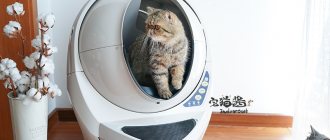Many, even the most well-groomed pets, are often found to have parasites. Sometimes animals develop lice bugs. Lice eaters in cats are ectoparasites that feed on cat fluff and plasma.
Removing wool beetles is a mandatory measure. After all, even though parasites do not live on the human body, they can harm him and his pet.
In addition to physical and mental discomfort, lice eaters are carriers of infections and helminthiasis.
Signs of the disease
Lice eaters are light or yellowish insects, 2 mm in size. Lick eaters have a “gnawing” mouth and a flat body. Parasites differ from fleas by their head, which is narrowed, and their body, which becomes smaller closer to the anus.
There is only one species of lice eaters in cats – Felicola subrostratus. Insects live on the animal’s fur constantly. They can be held on the hairline thanks to special paws-clothespins.
When laying eggs, the female attaches them to the roots of the fur. The parasite feeds on skin particles, fluff or lymph obtained from a bitten wound.
Wool beetles often suffer from dipylidia. This is a dangerous type of helminthic infestation that takes away vitality and energy from your pet.
Leading symptoms of the presence of lice eaters in cats:
- restless behavior;
- poor sleep;
- itching caused by multiple bites;
- poor appetite;
- wounds and scratches that often fester;
- skin rash;
- hair loss, brittleness
- local skin inflammation;
- lack of interest in games in the animal.
You can confirm the presence of the disease by holding the cat under a lamp or sunlight. Wool beetles love warmth and will crawl towards the light to bask.
Initial examination
If you notice the symptoms listed above, then this is a signal for a detailed examination of your pet.
- Bring the animal to a bright directional light - under a table lamp or flashlight.
- If possible, equip yourself with a magnifying glass or other optics.
- Run your hands through the wool and carefully examine the fibers.
- First, examine the cat's head and neck, then the groin area and the base of the tail.
With the naked eye or with a slight magnification, you can see traces of the vital activity of lice - black dots that can be located at the base of the hairs. This is parasite excrement. The pest itself is more difficult to detect, since the insect is very small and translucent. Moreover, unlike fleas, it does not jump, but is inactive.
Tip : lice eaters are heat-loving insects, so you can “lure” them to the surface of the fur by briefly holding your pet near an electric lamp or heater. After 10-15 minutes, the ectoparasites will become more noticeable - tiny dots will appear on the tips of the cat's hair.
If, after following the steps described, you are convinced that your animal has lice, then a visit to the veterinarian is necessary. The specialist will take a scraping and perform the necessary tests to determine the degree of infection and prescribe treatment. You should also make sure that the cat has not developed a disease that reduces immunity, the risk of which is high with a prolonged attack of the parasite.
What does a lice eater look like?
To learn how to get rid of lice eaters, it is important to understand what lice eaters look like in cats. Insects are small in size - about 2 mm. The body of the pest is gray or yellow, translucent, flat.
Wool beetles are visually similar to lice, but they lack wings. The insect's head is quadrangular and large.
The oral apparatus of lice eaters is well developed and is of the gnawing type. The ectoparasite has marigolds on its paws, thanks to which it attaches to the fur of animals.
Compared to fleas, lice eaters that live on cats are not blood-sucking parasites. But sometimes the lice eater drinks blood from wounds or scratches on the skin.
Lice eaters multiply quickly. The female lays 100 eggs at a time, treated with a sticky substance. The larva takes several days to form. After a month, she becomes a sexually mature individual.
Classification of parasites
In veterinary practice, cats are classified into the following groups of parasites:
- external (ectoparasites) – fleas, ticks, lice eaters;
- internal parasites – parasitic worms (various species, classes of helminths).
Often parasitic infections in representatives of the cat family are provoked by the simplest unicellular microorganisms - coccidia, toxoplasma, opportunistic flora, which is active under favorable conditions for its existence, activity and reproduction.
Troubles for cats include ixodid mites, scabies (ear) mites, fleas, lice mites, lice, and internal parasitic worms - helminths.
Important! Do not forget that ecto-endoparasites are carriers of dangerous viruses and bacteria, weaken the immunity of animals, which increases the risk of contracting dangerous diseases and infections in pets.
External parasitic insects are localized at the mouths of hair follicles, near the ducts of the sebaceous glands, provoking the development of inflammatory pathological processes in various structures of the dermis. Ectoparasites cause allergic reactions and can cause intoxication.
Internal parasites in cats, various species, classes of helminths can live in almost all tissues, organs and body systems of cats and other domestic animals.
Worm infestations pose a serious danger to pregnant cats, small kittens with an immature immune system, and weakened and exhausted animals.
External parasites, living on the body of cats, feed on particles of dead cells, blood, and lymph of the owner. When a flea bites, ticks inject saliva into the wound, which may contain viruses and bacteria that are dangerous to animals. Cats experience severe itching, which leads to the formation of ulcers, wounds, and scratches on the body, which are the “gateway” for bacterial flora to enter the cat’s body.
Internal parasites are localized in various tissues, organs and systems, releasing dangerous endotoxins during their life processes, which lead to various systemic and functional disorders.
Ways to get rid of hair lice
Treatment aimed at eliminating lice in cats involves the use of insecticides. Antiparasitic agents can be purchased at a veterinary pharmacy in the form of shampoo, drops, spray or emulsion.
For greater effectiveness, it is recommended to use the drugs 2-4 times. After all, many insecticides do not kill lice eaters in domestic cats the first time.
To choose the best remedy for lice eaters, it is advisable to consult a veterinarian. The doctor will assess the degree of infection and select the safest but most effective drug.
Drops
To get rid of lice in cats, drops are often used. The product is applied to areas of the skin that the cat cannot lick. This is the longitudinal line of the spine and withers.
This medicine will protect the animal from harmful insects for 30 days. After a month, the drug is used again.
If a cat's hair eater appears, then use the following drops:
| Product name | Action | Mode of application |
| Advantage | Imidacloprid disrupts the transmission of nerve impulses, as a result of which the wool beetle dies. | The product is applied to healthy skin (the back of the head) dropwise. The dose is determined by the weight of the cat - up to 4 kg - 1 pipette, 4-8 kg - 2 pipettes, more than 8 kg - a combination of pipettes of different packaging. |
| Leopard | Fipronil disrupts the functioning of the parasite's nervous system, which contributes to paralysis and subsequent death of the insect. | The drops are used once, applied to the skin on the back, shoulder blades or neck. Dosage for a cat weighing 1 kg – 10 drops, up to 3 kg – 20 drops, over 3 kg – 1 ml. |
| Stronghold | Selamectin interacts with receptors in neurons and muscles, making cells more permeable to chlorine ions. This causes paralysis and death of the lice eater. | Drops are used to treat healthy areas of skin that the cat cannot lick. Approximate dosage – 1 ml. After a month, the product is reapplied. |
Other types of drops are no less popular for ectoparasites in cats. These are ZPIP (Fiprex), Pfizer, IN-AP complex.
Emulsions
If your cat has lice, you can use insecticides produced in the form of an emulsion. The medicine obtained after diluting the concentrate with water is rubbed into the pet’s skin (withers, spine, neck).
How to remove lice beetles from cats is written in the instructions for the medications.
Popular emulsions:
- Merial;
- Agrovet protection;
- Pfizer;
- Impex;
- Bayer;
- Bionics.
Sprays
Another way to treat lice in pets is to use a spray. The aerosol is sprayed over the entire body of the animal, avoiding getting the medicine into the eyes, mouth or nose.
In a couple of hours we need to buy a cat. It is advisable to reapply the spray after a week.
The disadvantage of insecticides in aerosol form is that it is necessary to ensure that the cat does not lick the fur after it has been treated.
Effective spray against lice for cats - Greenfort. Other popular products are Rosagroservis, Bayer.
Shampoos
A variety of shampoos are considered the safest remedy for lice in cats.
But insecticides produced in this form are not effective enough. After all, after the first bath, ectoparasites do not disappear completely.
Benefits of anti-parasite shampoo:
- provide hair care;
- eliminate inflammation;
- moisturize the skin;
- eliminate itching;
- do not cause allergies.
How to rid a kitten of lice-eaters using shampoo is written in the instructions included with the product. The insecticide is applied to wet wool and left there for 5 minutes. Then wash everything off with warm water.
Today the following insectoacaricidal shampoos are used - Ms Kiss, Lugovoy, BIO-GROOM, Fitoelita, Celandine. The drugs Lapushka, Rolf Club, and BioVax also have positive reviews.
Folk remedies
For lice in small kittens and adult cats prone to allergies, you can use folk remedies. Treatment of parasitosis at home is carried out using herbal decoctions.
Chamomile, wormwood, wild garlic or string are often used. These herbs contain essential oils that repel pests.
But traditional methods are effective only in the initial stages of the disease.
If there are a large number of wool beetles, home therapy will be ineffective.
Video
Treatment for ectoparasites of small domestic animals
Features of flea removal
If you find fleas on your cat, you should definitely choose an effective medicine to get rid of them, since these parasitic insects can cause helminthic infestation. You need to know the basic recommendations when treating an animal:
- you should select a product created directly for cats, which takes into account all the characteristics of the animal’s body;
- There is no need to use anti-flea products on newborn kittens without first consulting a veterinarian;
- there is no need to bathe the animal 3 days before treatment with drugs and 3 days after the procedure (unless required by the use of certain flea products);
- Do not let the cat lick itself after treatment for 30 minutes;
- it is important to treat not only the cat itself, but also the place where it spends time (plays, sleeps);
- It is more correct to apply the drug not to the cat’s fur, but to the skin in the area of the withers and along the spine;
- It is important to adhere to a certain dosage, taking into account the age and body weight of the pet.
To prevent flea infestation, treatment should be carried out at least once every 3 months. It is better to treat a cat that is used to walking outside at least once every 1-2 months.
How dangerous are lice eaters?
Treatment for lice in kittens and cats is quite simple. At the same time, lice eater bites are relatively not painful.
Therefore, many do not take the presence of parasites in their pet seriously, and in the meantime, insects can lead to the death of the animal.
Lice eaters carry worms and worms, the parasitism of which the pet tolerates much worse. Moreover, the likelihood of invasion increases if a cat swallows a lice eater.
Lice eaters also carry a variety of diseases. The risk of infection increases if the cat has delicate and sensitive skin.
Complications of lice parasitism in cats:
- Infectious diseases
- Fungal diseases
- Weakening of the immune system
- Subcutaneous mites
- Deterioration in wool quality
- Anemia
- Allergy
- Exhaustion of the body
- Exacerbation of chronic diseases
- Baldness.
Human contact with sick animals can lead to a number of dangerous consequences, despite the fact that lice eaters live exclusively on animal fur. Lice eaters can also infect humans with infections and worms.
More often, lice eaters carry helminthiasis, including tapeworms.
special instructions
Precautionary measures will help minimize the development of side effects from the use of an insectoacaricidal agent. You cannot use Bars drops to treat small kittens under 2 months of age. It is also not recommended to use the antiparasitic treatment for cats during the period of gestation and lactation.
Important! As a precaution, experts strongly do not recommend treating with several products at once or deliberately shortening the time between treatments.
We suggest you read: Allergy to fleas in cats is an alarming sign for the owner
Sources of infection by external and internal parasites
Infection with ecto- and endoparasites occurs through direct contact of healthy individuals with infected animals, through airborne droplets, and alimentary routes. So, for example, infection with helminths is possible through the transplacental method, during embryogenesis, when newborn kittens pass through the birth canal.
Infection of cats with helminth infections is possible not only through transplacental contact, but also by eating feed contaminated with worm eggs. It is enough for a cat to simply eat raw meat, offal, river and sea fish infected with helminths.
In addition, helminths, cysts, and eggs of parasitic worms are widely distributed in the external environment and can live on plants, the surface of the earth, in soil, and water bodies. Parasitic worms are transmitted to humans from cats through feces and saliva.
Most types of helminths have a complex development cycle, which occurs with the participation of the main and definitive host.
Important! Many owners of furry purrs mistakenly believe that a domestic cat, male cat, or kitten that does not leave the confines of the house or apartment cannot become infected with helminthiasis or pick up ectoparasites. This is absolutely not true, since eggs and larvae of ecto- and endoparasites can enter the home on people’s shoes, clothes, and household items.
A cat can pick up dangerous parasitic insects through care and hygiene items, shared brushes, and bedding. Animals kept in groups are at risk, especially if animal hygiene standards and rules are not observed.
